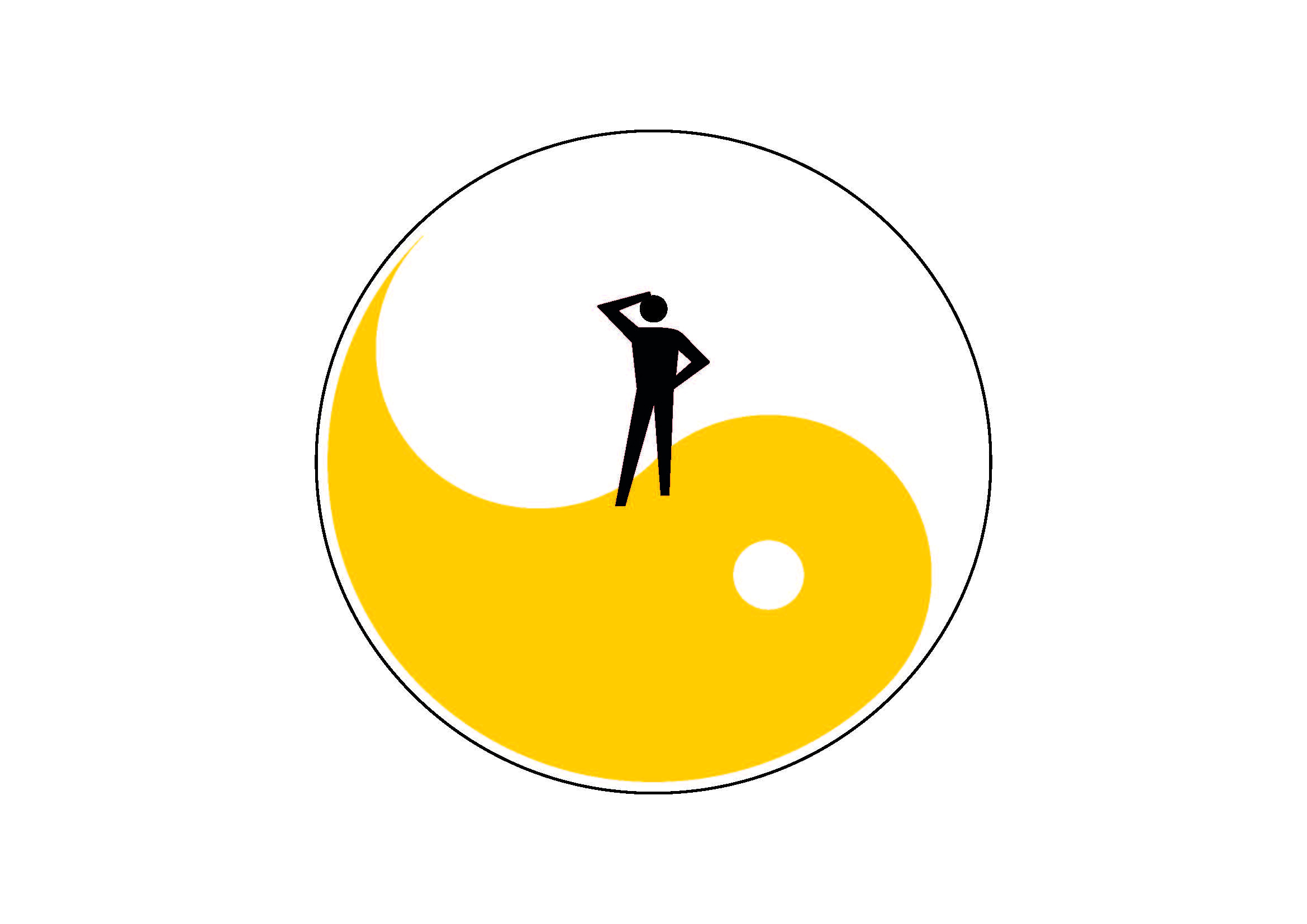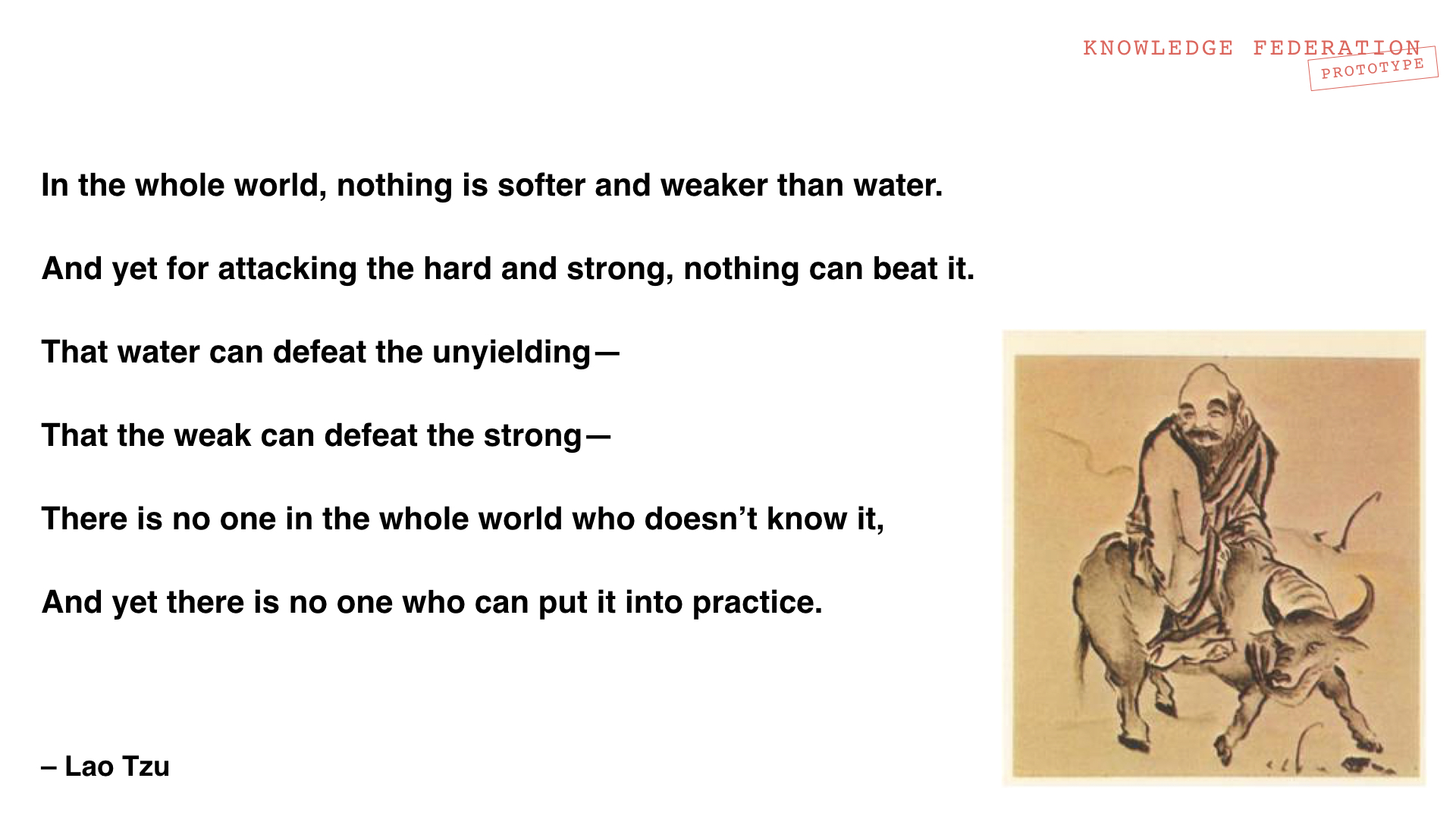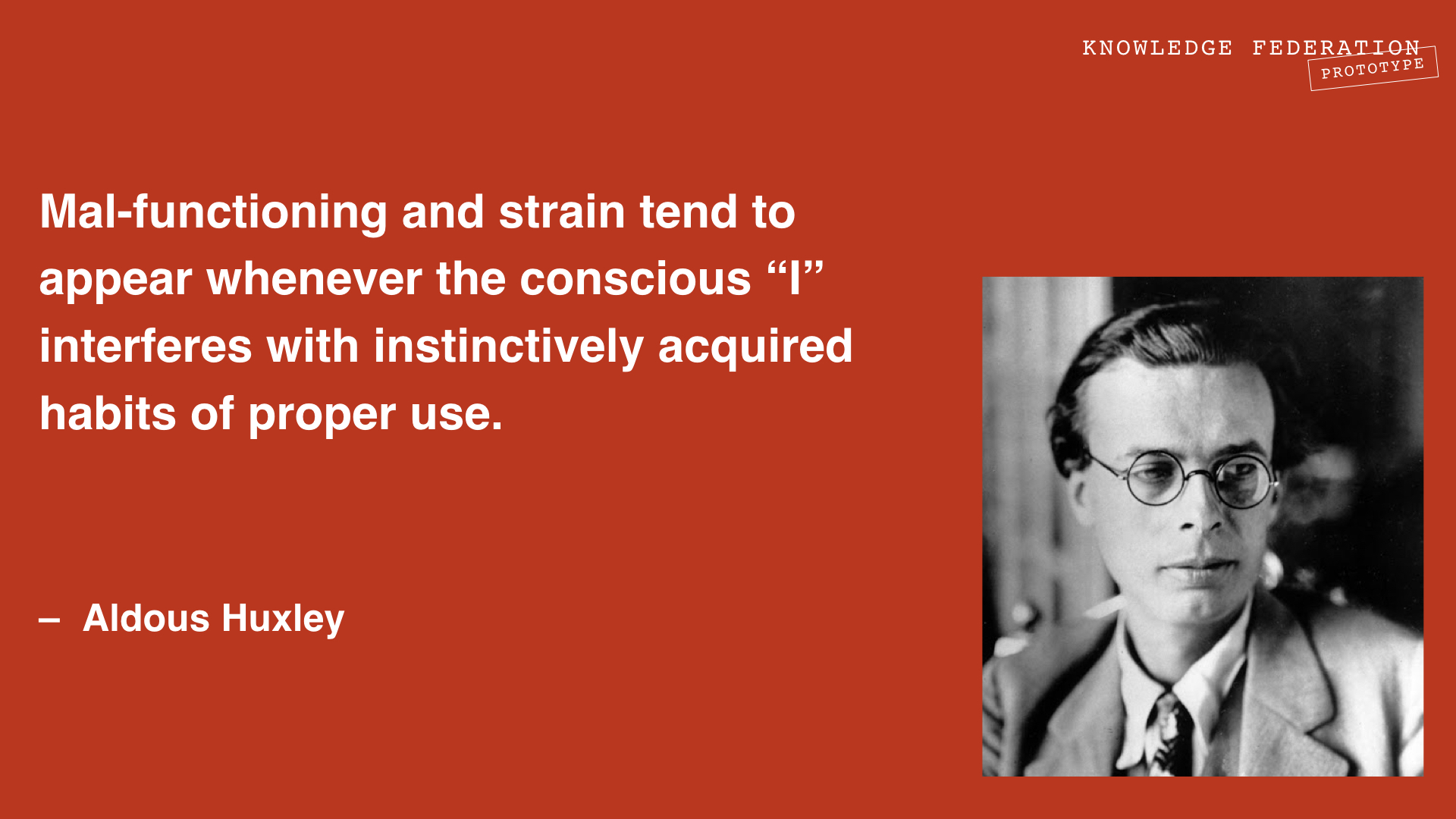Holotopia
Contents
HOLOTOPIA
An Actionable Strategy
Imagine...
You are about to board a bus for a long night ride, when you notice the flickering streaks of light emanating from two wax candles, placed where the headlights of the bus are expected to be. Candles? As headlights?
Of course, the idea of candles as headlights is absurd. So why propose it?
Because on a much larger scale this absurdity has become reality.
The Modernity ideogram renders the essence of our contemporary situation by depicting our society as an accelerating bus without a steering wheel, and the way we look at the world, try to comprehend and handle it as guided by a pair of candle headlights.
Scope
We turn to culture and to "human quality", and ask:
Why is "a great cultural revival" realistically possible?
What insight, and what strategy, may divert our"pursuit of happiness" from material consumption to human cultivation?
We may approach the same theme from a different angle: Suppose we developed the praxis of federating information—and used it to combine all relevant heritage and insights—from the sciences, the world traditions, the therapy schools...
Suppose we used real information to guide our choices, instead of advertising. What changes would develop? What difference would they make?
During the Renaissance, preoccupations with original sin and eternal reward gradually gave way to a pursuit of happiness and beauty here and now; and the arts prospered.
What might the next "great cultural revival" be like?
Diagnosis
There is a popular myth which precludes information and knowledge to make a difference in this realm too—analogous and related to the myth of free competition that breeds the power structure.
It is the belief that we don't really need information, or culture, because we can experience what makes us happy directly—and reach out toward it with the help of science and technology.
Our "pursuit of happiness" 'in the light of a candle' made two values prominent, at the detriment of others: convenience (favoring what appears to be pleasant and easy) and egotism (favoring narrowly conceived "personal interests"). Both appear as scientific: convenience because it resembles the experiment; egotism because it is the way in which nature herself pursues wholeness. Both values are, of course, endlessly supported by advertising.
Those two values now guide even our choice and creation of information!
Remedy
We point to the remedy by the Convenience Paradox ideogram. Like all of us, the person in the picture wants his life to be convenient. But he made a wise choice: Instead of simply following the direction downwards, which feels easier, he paused to reflect whether this direction also leads to a more convenient condition.
It doesn't.
The convenience paradox is a pattern, where the pursuit of a more convenient direction leads to a less convenient situation. The iconic image of a "couch potato" in front of a TV is an obvious instance.
The convenience paradox is a result of us simplifying "pursuit of happiness" by ignoring its two most interesting dimensions—time; and our own condition, which makes us inclined or able to feel</em> in any specific way.
By depicting the way to wholeness as "yang" in the traditional yin-yang ideogram, it is suggested that its nature os paradoxical and obscure—and that the way needs to be illuminated by suitable information. This way is what the Buddhists call "Dhamma" and the Taoists "Tao".
Wholeness is such a beautifully inclusive value, with so many sides! We may have everything else in the world—and the lack of vitamin C will make it all futile.
We showed that the convenience paradox is a pattern repeated or subtly reflected in all major aspects of our civilized human condition.
To illustrate it, however, we here focus on what might be its least known and most interesting side—our capacity to feel. We'll elaborate it in terms of three specific insights.
1. Human wholeness feels incomparably better than most of us can imagine.</em>
We called this insight "the best kept secret of human culture" , and made it a theme of one of our chosen ten conversations.
It was a glimpse or an experience or side of human wholeness that attracted our ancestors to the Buddha, the Christ, Mohammed and other adepts and teachers of the way, or "sages" or "prophets". C.F. Andrews described this in "Sermon on the Mount":
"(Through their practice, the early disciples of Jesus found out) that the Way of Life, which Jesus had marked out for them in His teaching, was revolutionary in its moral principles. It turned the world upside down (Acts 17. 6). (...) They found in this new 'Way of Life' such a superabundance of joy, even in the midst of suffering, that they could hardly contain it. Their radiance was unmistakable. When the Jewish rulers saw their boldness, they 'marvelled and took knowledge of them that they had been with Jesus' (Acts 4. 13). (...) It was this exuberance of joy and love which was so novel and arresting. It was a 'Way of Life' about which men had no previous experience. Indeed, at first those who saw it could not in the least understand it; and some mocking said, 'These men are full of new wine' (Acts 2. 13)."
The existence and character of this experience can, however, readily be verified by simply observing or asking the people who have followed the way, and tasted some of its fruits.
2. The way to wholeness is counter-intuitive or paradoxical.</blockquote>But it follows a "natural law", which can be understood; not in a mechanistic-causal way, but when we focus on and federate the phenomenology manifsted in the world traditions.
To get a glimpse of it, compare the above utterances by Lao Tzu, with what Christ taught in his Sermon on the Mount. Why was Teacher Lao claiming that "the weak can defeat the strong"? Why did the Christ asked his disciples to "turn the other cheek"?
Aldous Huxley's book "Perennial Philosophy" is alone sufficient to make this point. Coming from a family that gave some of Britain's leading scientists, Huxley undertook to not only federate some of the core insights about the way (by demonstrating the consistency of both the relevant practices and their results across historical periods and cultures), but to also make a case for the method he used, as an extension of science needed to support core elements of our cultural heritage.
3. The key to unraveling the paradox is to reverse the values.Convenience must be replaced by (to use Peccei's keyword) "human development". <p> <p>Egotism must be overcome through "selfless service".
While this insight can easily be federated in the manner just described, we here point to it by a curiosity.
In "The Art of Seeing", Huxley observed that overcoming egotism is a necessary element of even physical wholeness!
We may now perceive significant parts of our cultural history as struggle between cultivation of wholeness guided by insights into the nature of the way—and the power structure–related socialization, aided by the attraction of convenience and egotism. It is on the outcome of this struggle, Peccei observed, that our future will depend.
What hope do we have of reversing its course?The answer is, of course, that we now have a whole dimension to work with.
We can design communication.We can create media content that will communicate the convenience paradox in clear and convincing ways; we can guide people to an informed use of information; and we can create various elements of culture to socialize us or cultivate us accordingly. Including, of course, the systems in which we live and work.
A vast creative frontier opens up.We illustrate this most fertile creative space, which the Holotopia project has undertaken to prime and develop, by a handful of examples.




